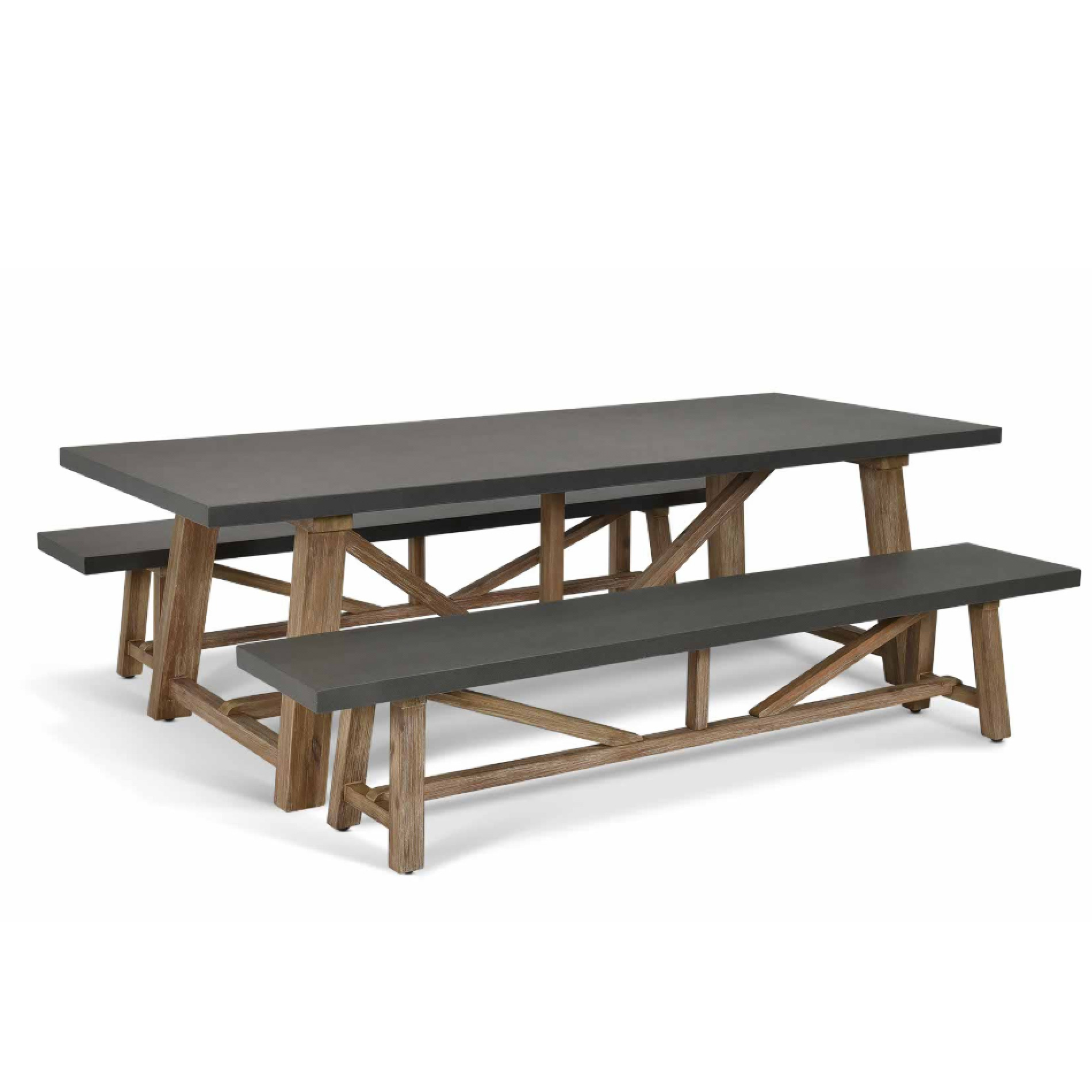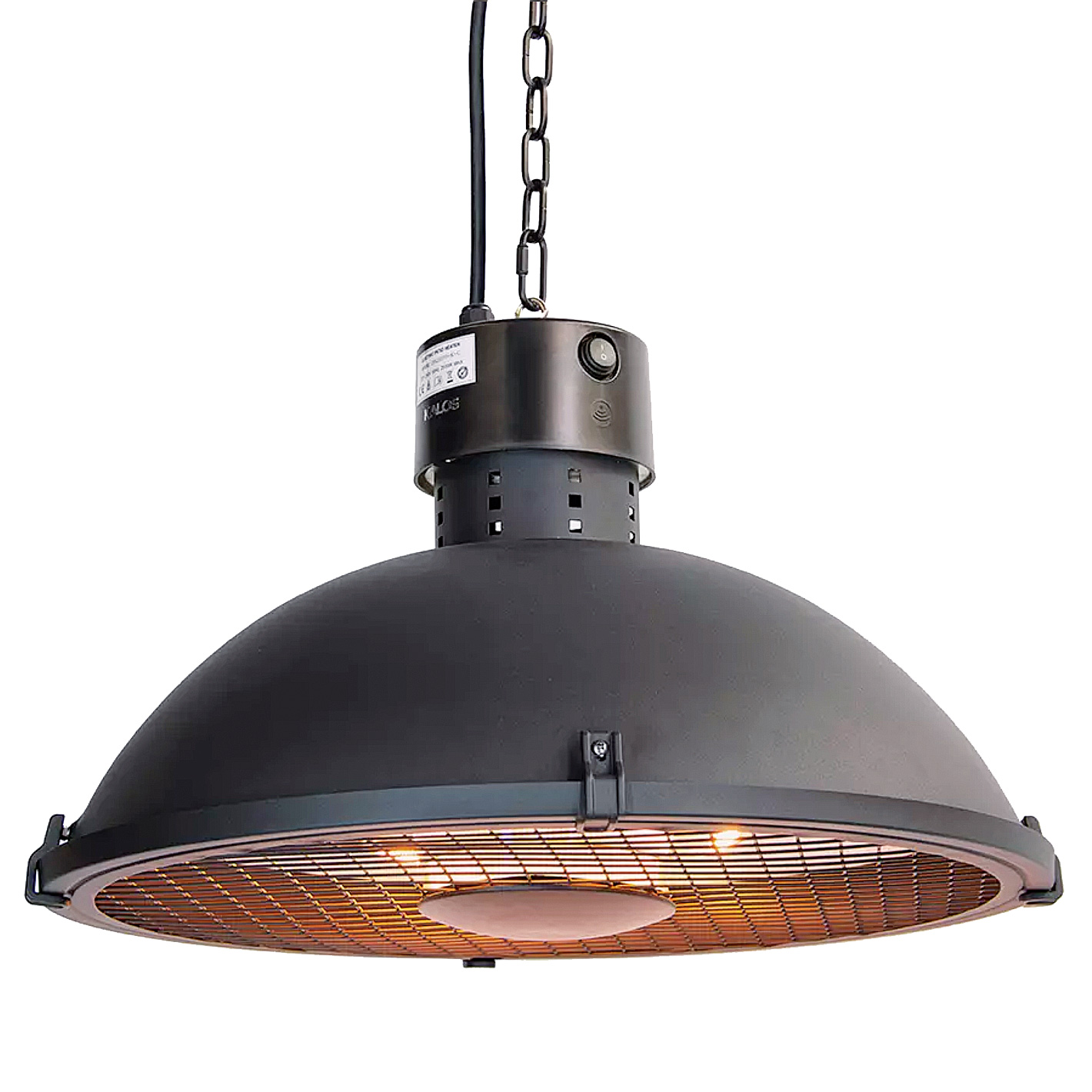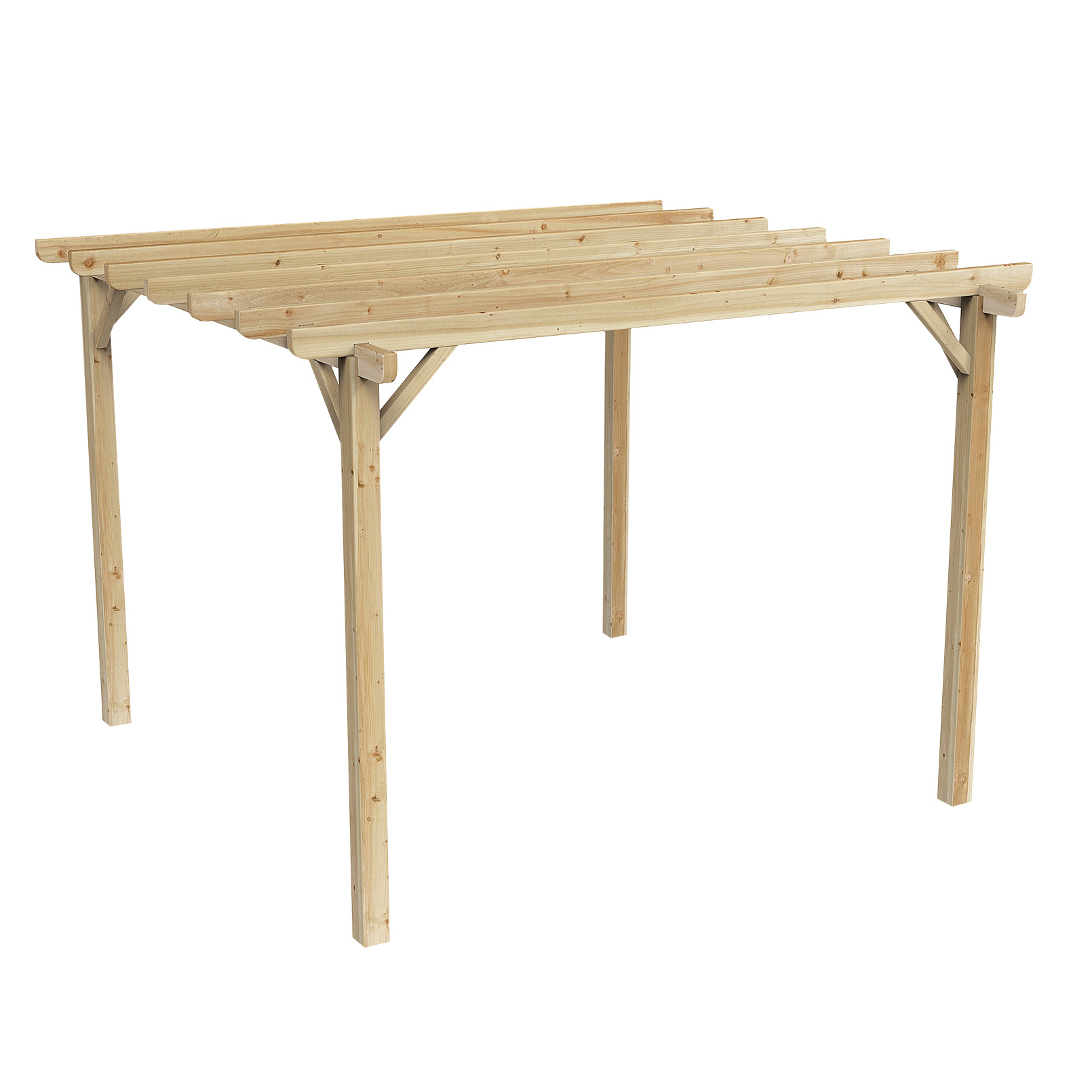In creating their lush multi-use garden, the owners have cleverly futureproofed the space for years to come
With a zone for dining, a veg plot, a relaxing sun trap, and space for quiet contemplation, this lush multi-use garden has it all...
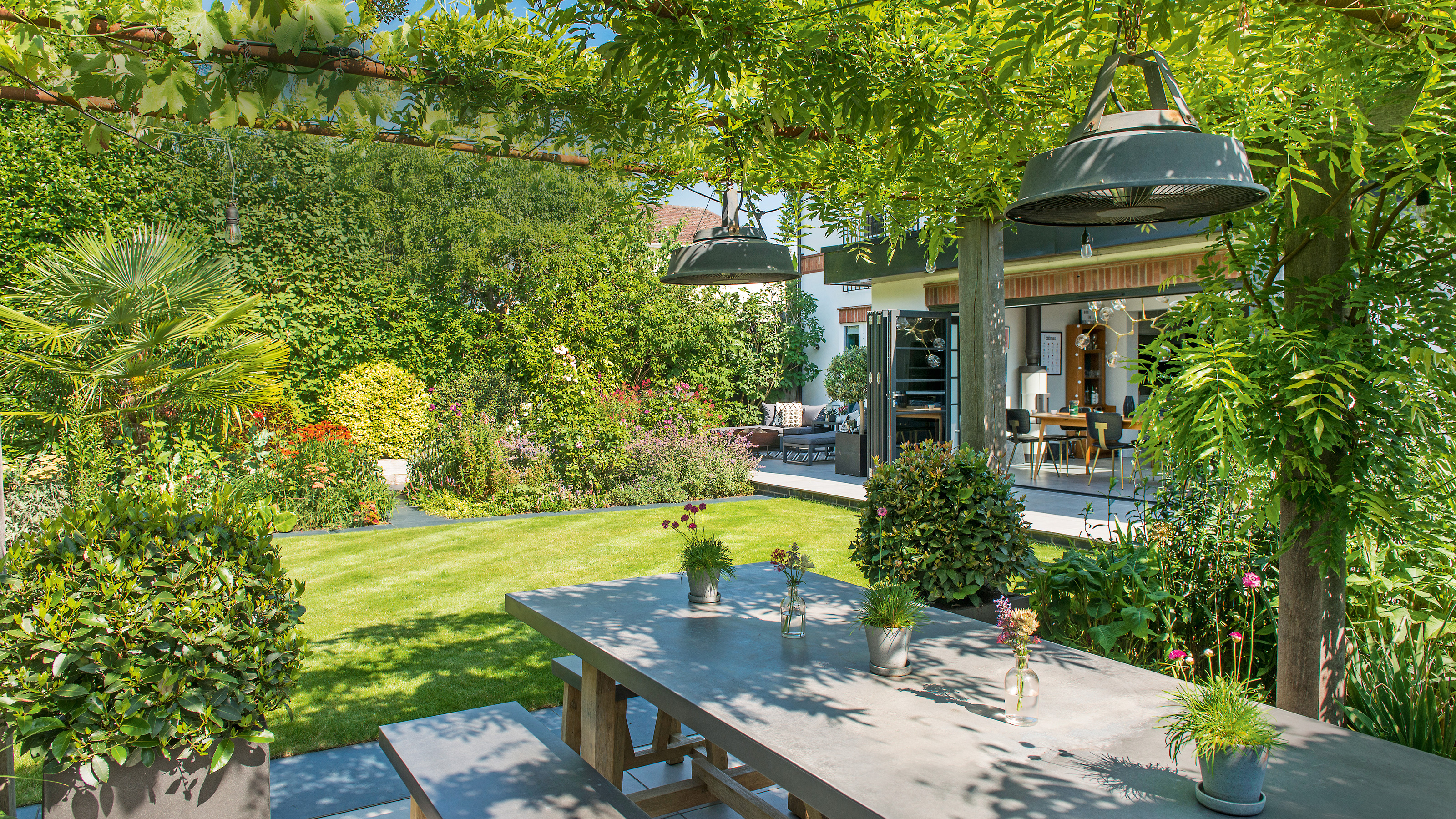

This lush multi-use garden in the smart, leafy suburbs of Cambridge wasn’t always so beautifully laid out. ‘It used to be a very traditional English garden, with a big lawn and lots of large shrubs,’ says owner, who lives here with her husband. ‘The lawn was lovely for the children.’
But as the family grew up, the way they used the garden changed. ‘We wanted a much bigger social space that we could all enjoy together,’ she says. The crunch came when the couple had the kitchen extended.
‘The builders ended up railroading some trees I’d planted. It was awful: I came home, saw the damage and cried. So, we decided: “Here’s an opportunity to do something different.”’
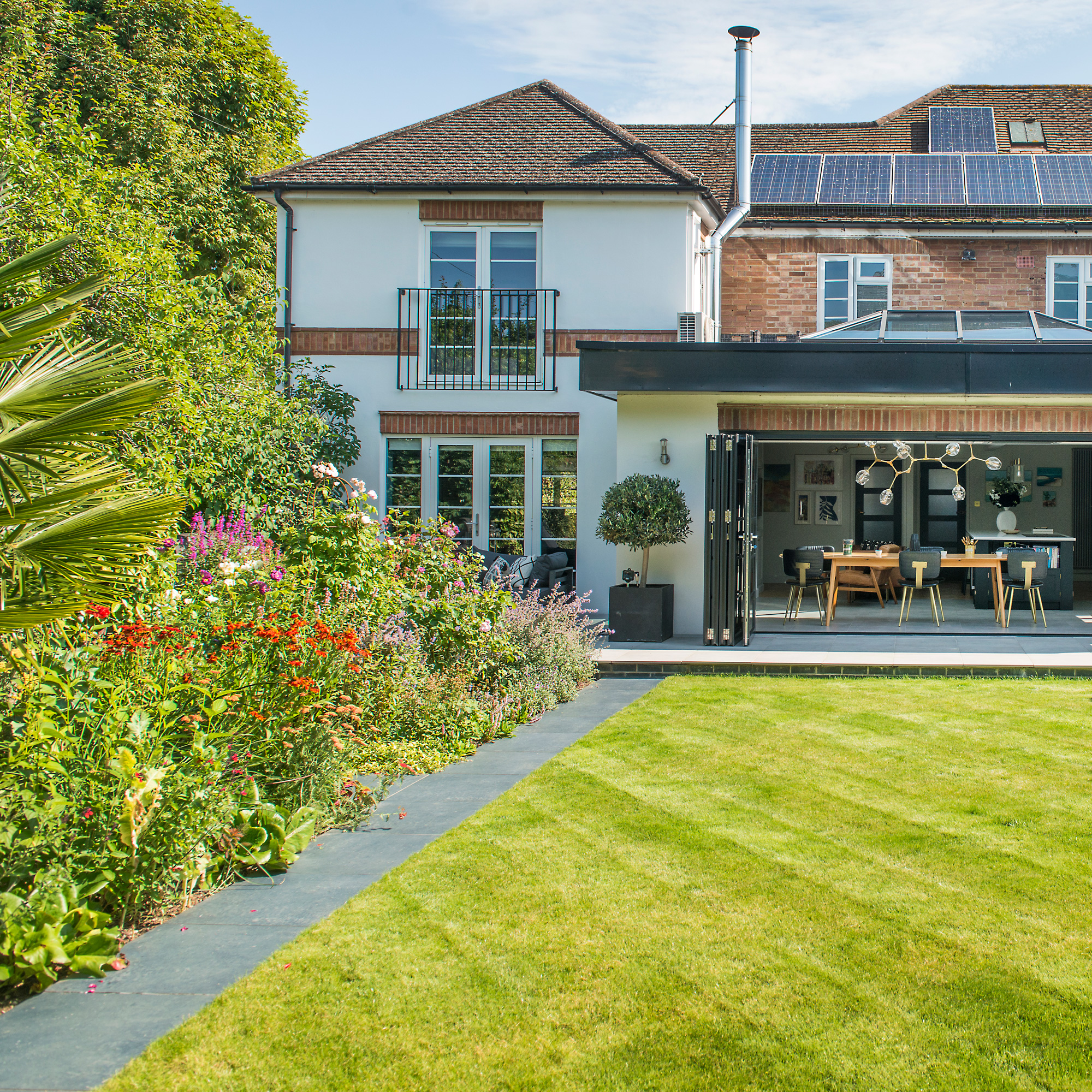
She designed the layout herself. ‘I knew I wanted a water feature in the centre,’ she says, ‘so the garden is designed around that. I wanted a sense of “organised chaos”, with colourful borders surrounded by a formal evergreen hedge.’
These colour-themed borders are arranged around the lawn, with prairie-style plantings either side of the dining space. ‘I was inspired by the prairie planting in the gardens of Newnham College in Cambridge, where I used to work,’ she says.
‘I asked the head gardener to come up with a planting scheme for me. She told me to buy two of everything and plant them randomly. You just literally dot them in.’
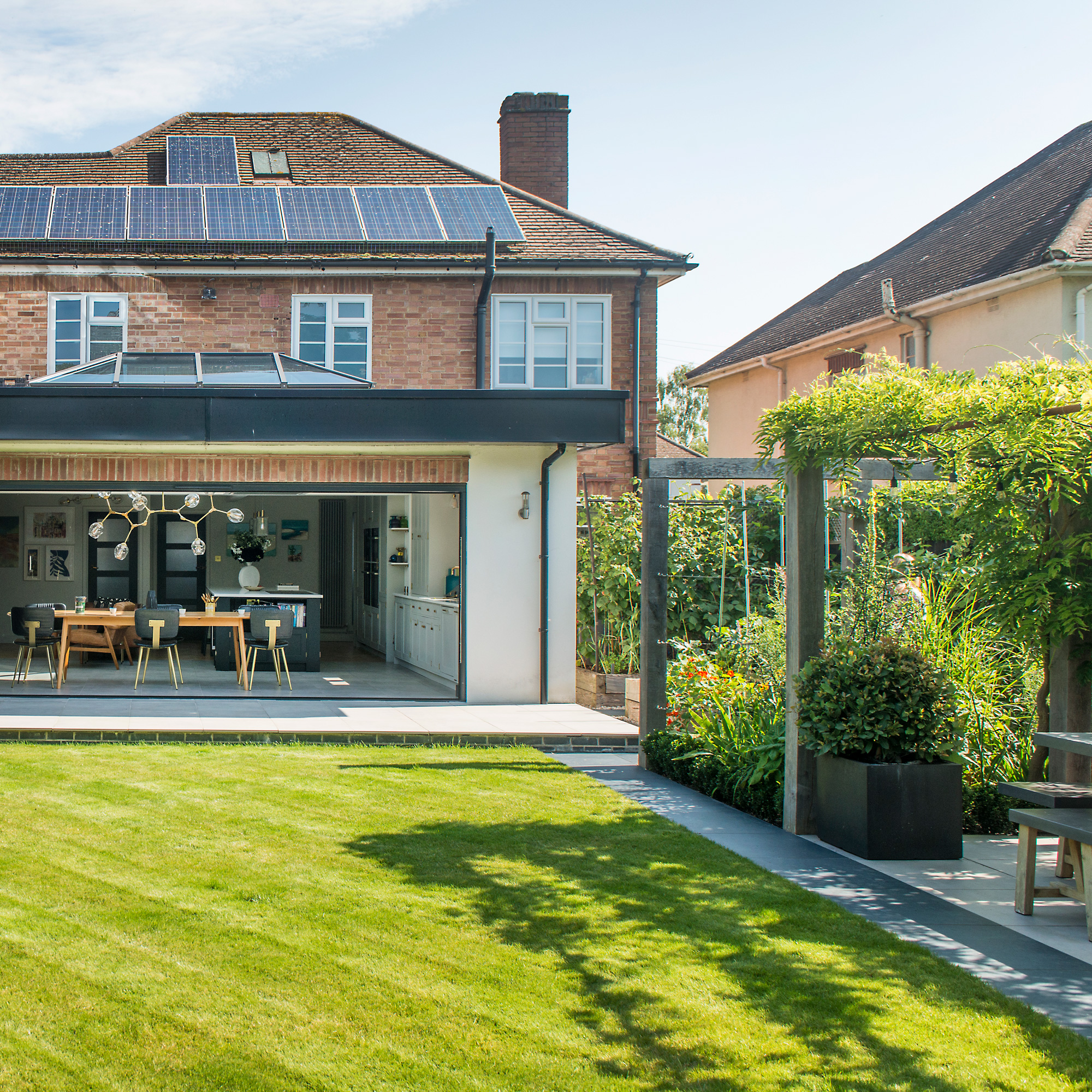
Hidden in the far corner is a Zen garden, its gravel chippings raked into ripples around a small Japanese maple. ‘My husband loves Japanese gardens so we had to have one,’ she says. ‘It’s such a cool place to sit with a book or a drink.’
Sign up to our newsletter for style and decor inspiration, house makeovers, project advice and more.
For the outdoor dining area, she wanted something that looked natural and decided on chunky green oak uprights to frame the space. The garden also has a small but productive veg patch – two raised sleeper beds filled with leafy salads and plants such as courgettes and tomatoes that can be trained vertically to save space.
‘I just plant things I like to eat: cut-and-come-again salads; beetroot, which is idiot-proof; garlic, and chard. For a relatively small city garden, we’ve crammed a lot in!’ she says.
Take the tour of this lush multi-use garden
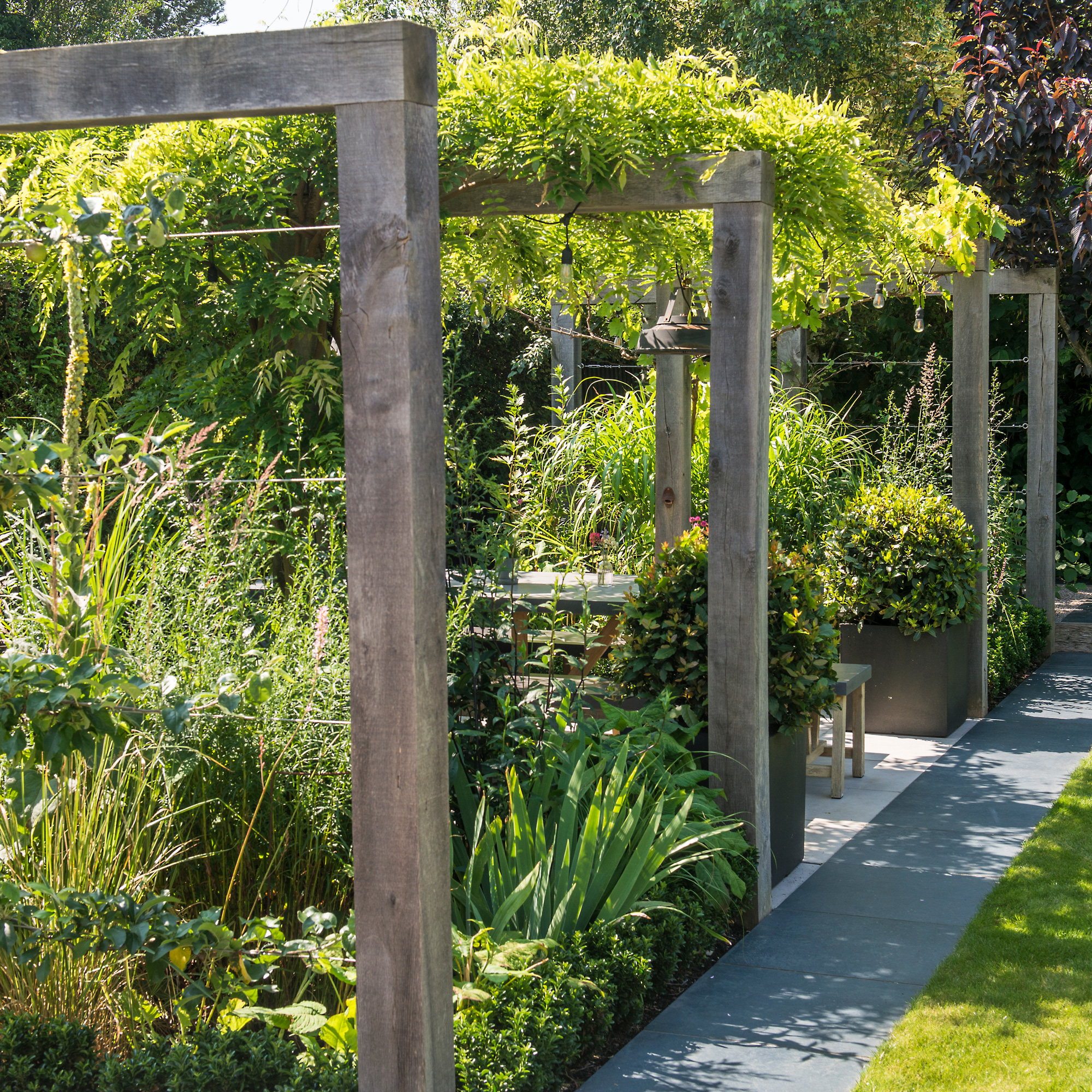
The attractive dining area is shaded by wisteria and grapevines growing on stout training wires between chunky green oak pergola posts.
‘The wisteria is a lot of work,’ says the owner. ‘I stick to Monty Don’s wisteria tip of cutting it back to six buds in summer and then two buds in February, then cut off all the spent flower heads – otherwise they stick like glue to the floor tiles.’
Inspired by the prairie planting schemes at the college where she used to work, the owner asked for a planting list and advice from the head gardener to create her own prairie-style borders between the pergola posts.
Plants shown include an espaliered apple, euonymus ‘Green Spire’ (an evergreen box alternative), strappy iris foliage, foxgloves, and miscanthus grasses.
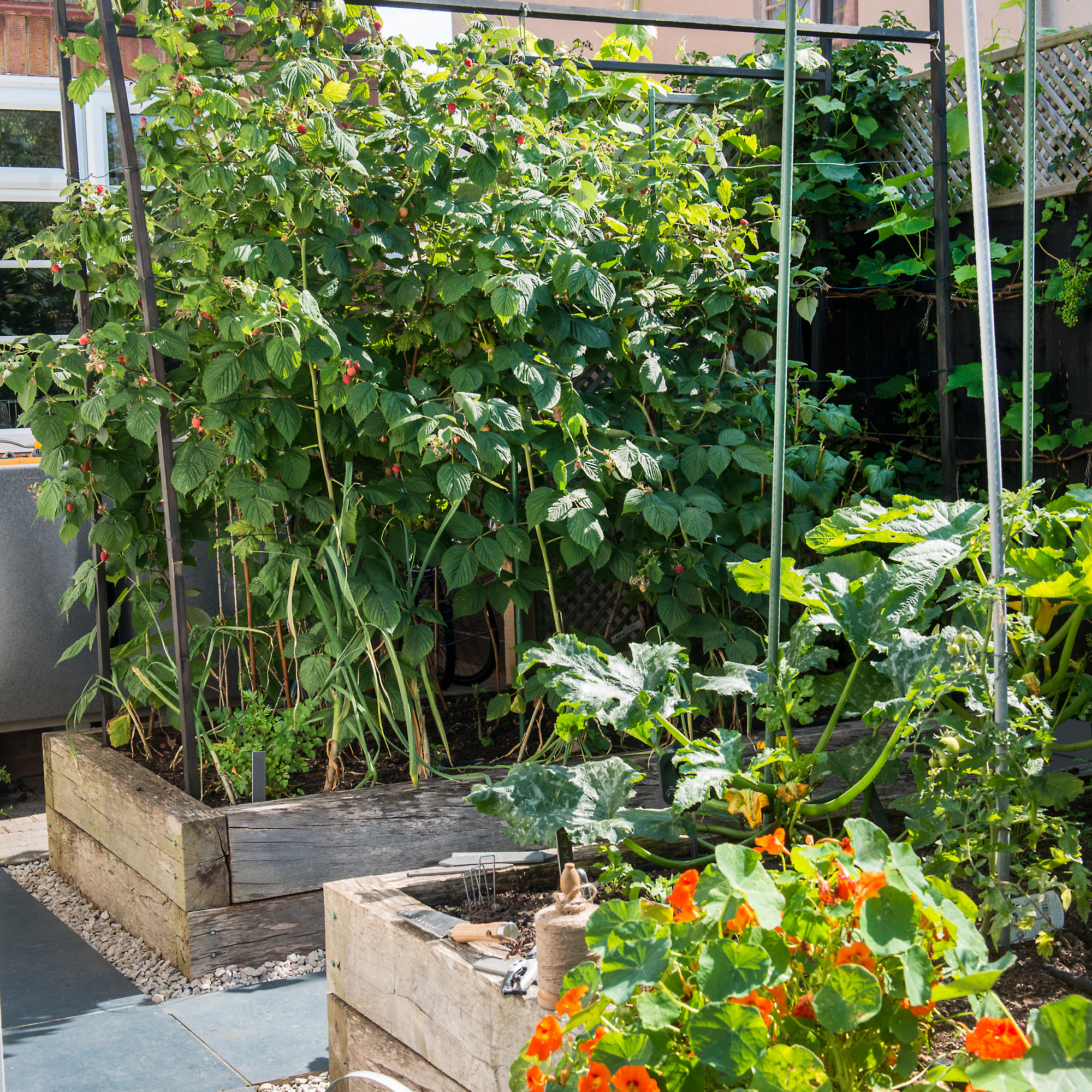
Raised vegetable beds provide rich pickings for the kitchen, all summer long. Because space is short, she only grows what the family will eat.
She also looks for plants that can be trained vertically, such as cordon tomatoes and courgettes, so they take up less space. A grapevine grows against the black-painted fence behind, and pollinator-friendly orange nasturtiums tumble over the front.
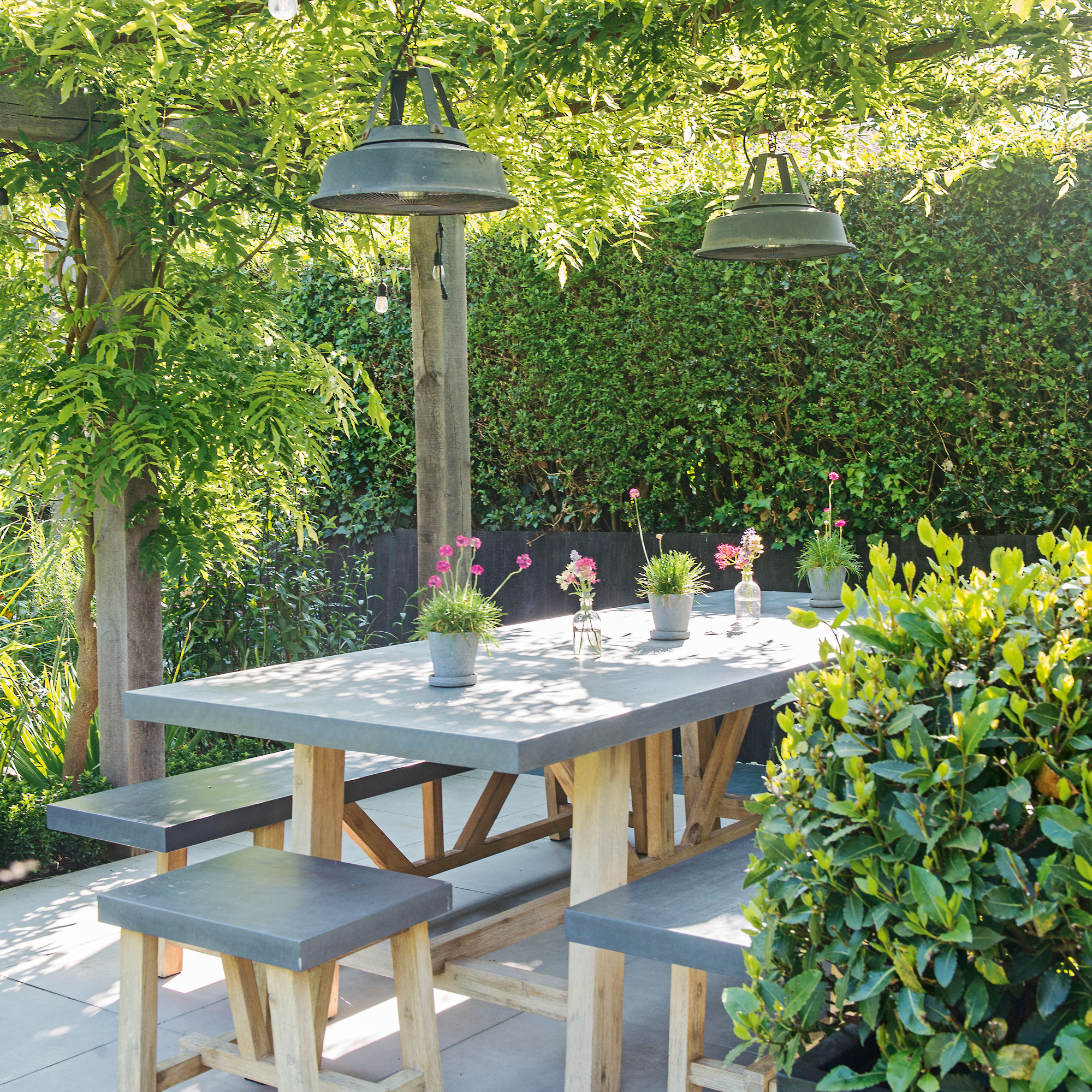
The dining set is made of acacia wood with a polystone top that resembles concrete but is warmer, easier to clean and far less heavy. Festoon lights run between the uprights.
The nautical-look hanging lanterns have integrated heating elements, making them perfect for taking the chill off cool summer evenings.
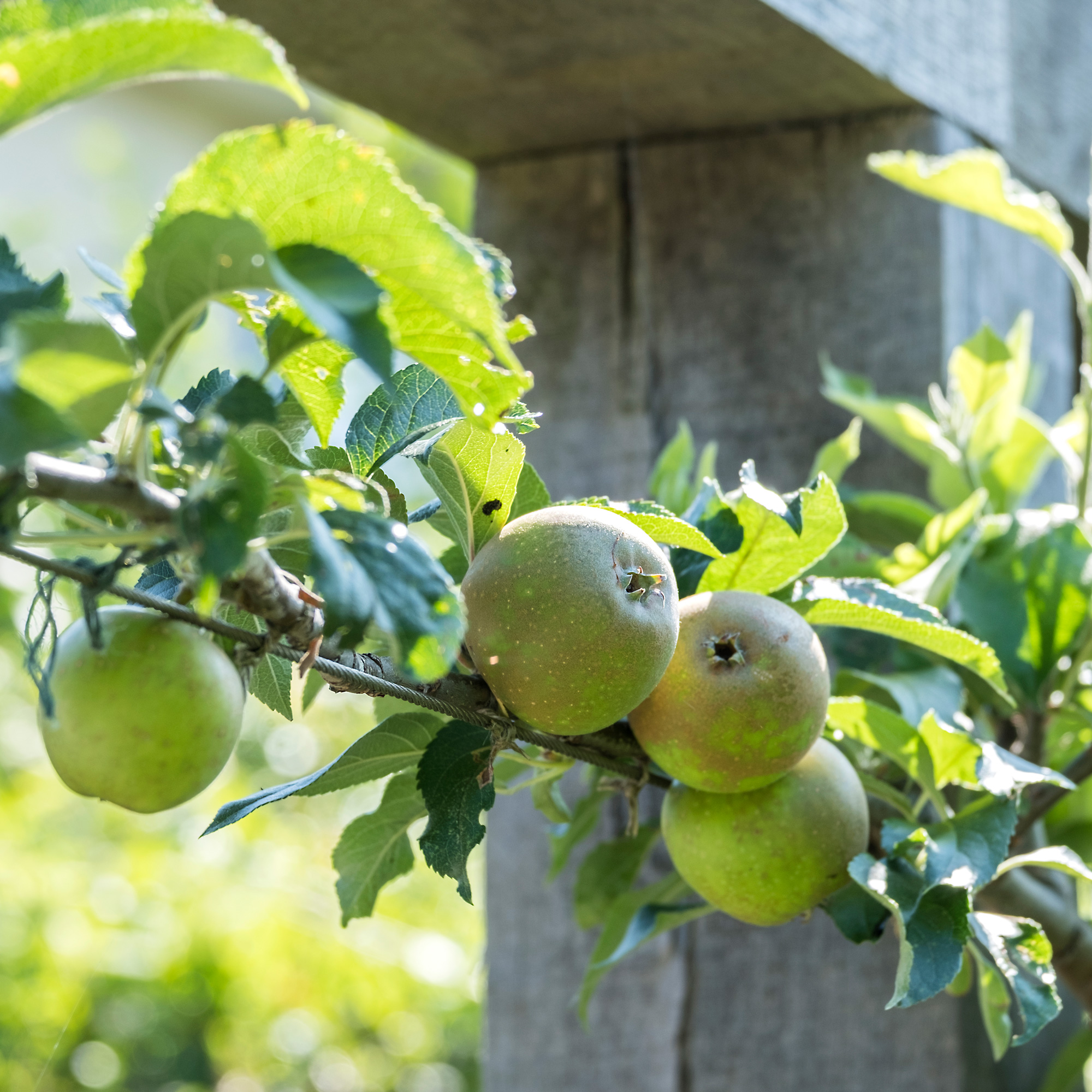
An espaliered apple tree is trained along wires on one end of the pergola. It’s a neat way to grow fruit in a small space, with the flowers and fruit forming within easy reach.
Choose a small cultivar (grown on ‘dwarfing rootstock’) from a specialist nursery for best results.
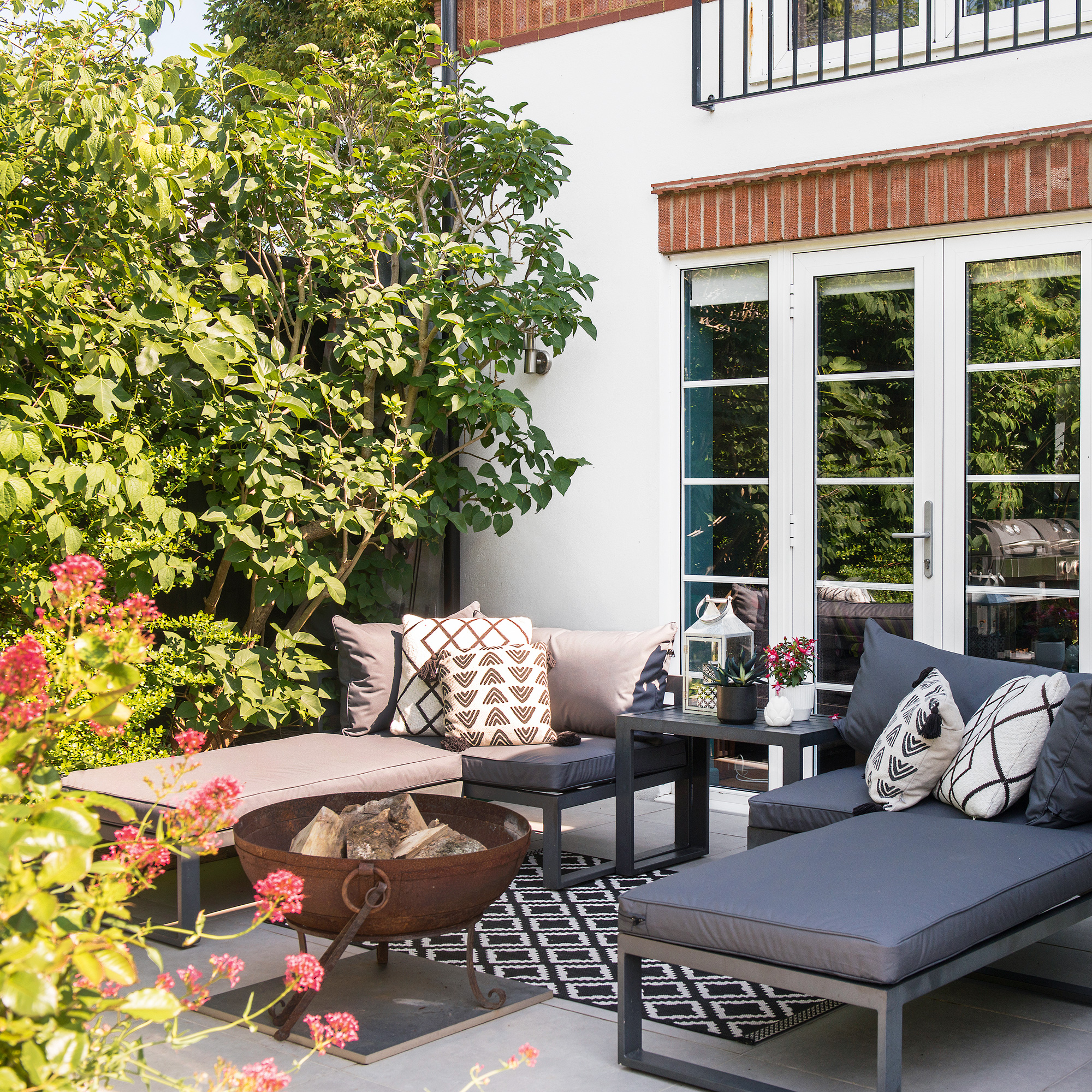
This sheltered corner is perfect spot for an outdoor snug, with modular chaise longues, barbecue grill and firebowl on which the family rustle up a delicious paella.
They also hold outdoor movie nights here, using a projector screen wired up to the laptop. Planting in the foreground includes pink spires of purple loosestrife, Lythrum salicaria and red valerian, Centranthus ruber.
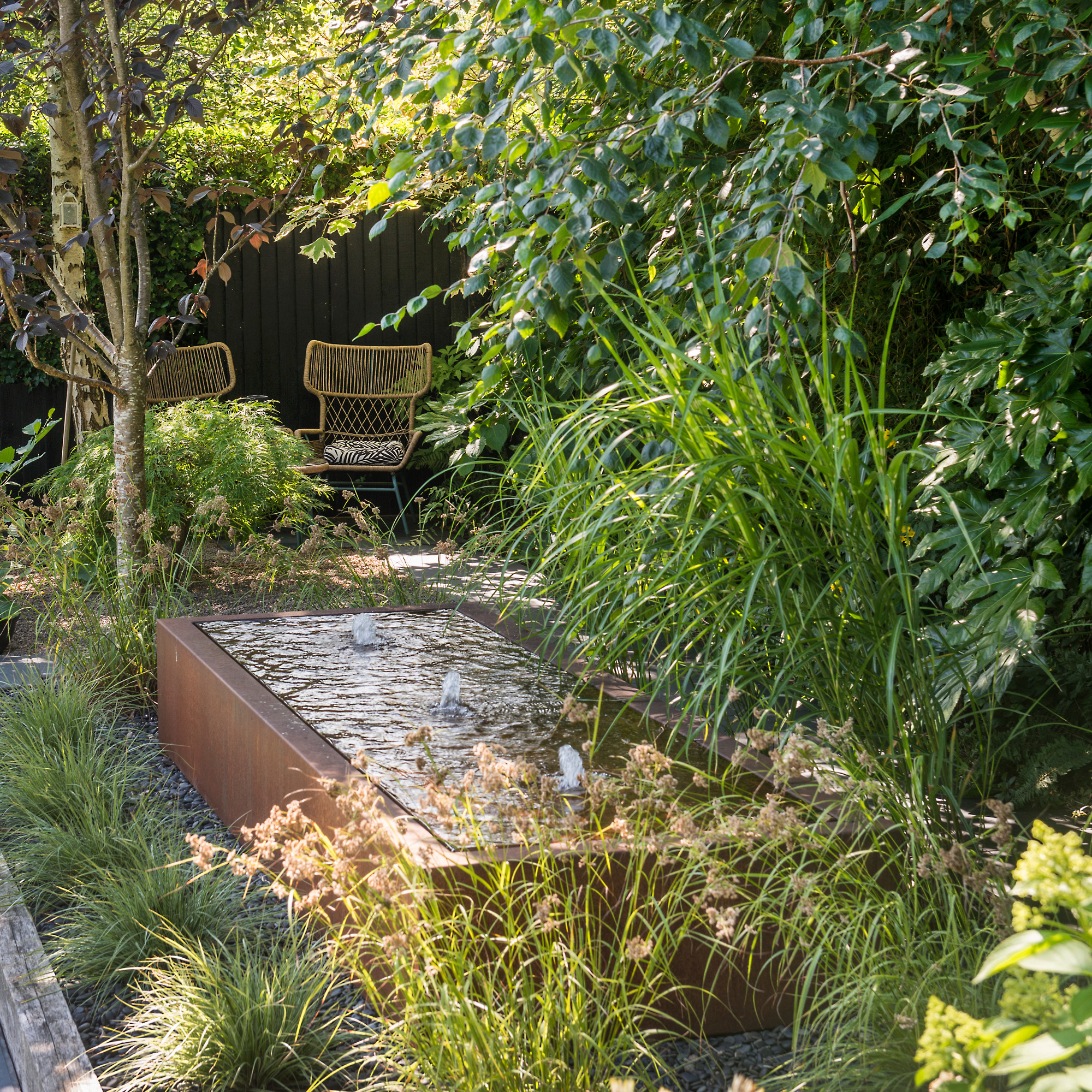
The garden has been laid out to maximise the wow-factor with this rusted Corten steel water feature as the main focal point which they imported from Belgium.
Planting in front includes low, clump-forming sedge, Carex pendula and woodrush, Luzula nivaea, with stripy Miscanthus ‘Zebrinus’ behind – the grasses adding a gentle sense of movement in the breeze.
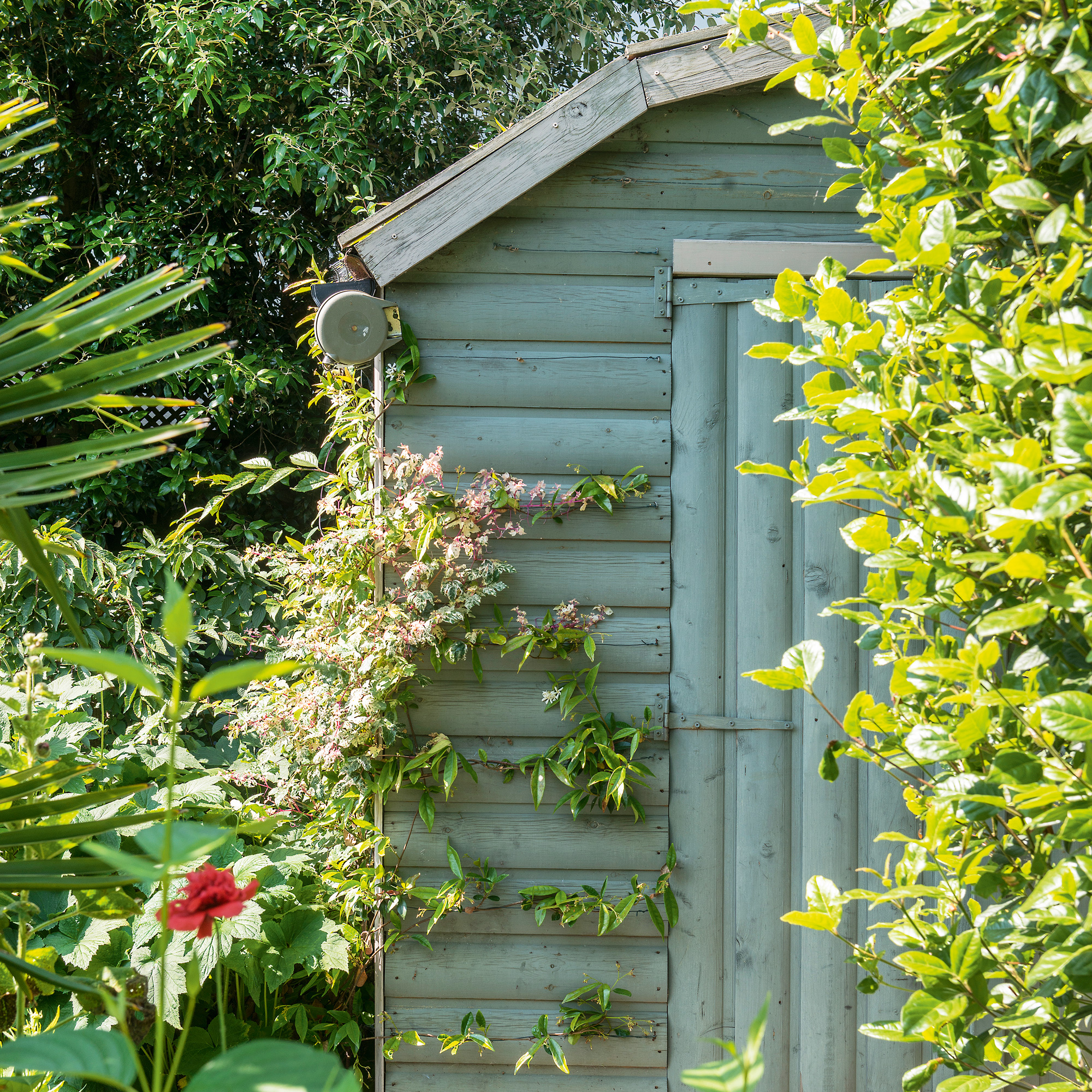
The blue-painted shed has a curved ‘Dutch’ roof, festooned with clematis and fragrant jasmine (Trachelospermum jasminoides).
Other plants include Japanese anemone ‘Honorine Jobert’, variegated hostas, unusual porcelain berry (Ampelopsis ‘Elegans’) and a white-flowered hydrangea ‘Annabelle’.
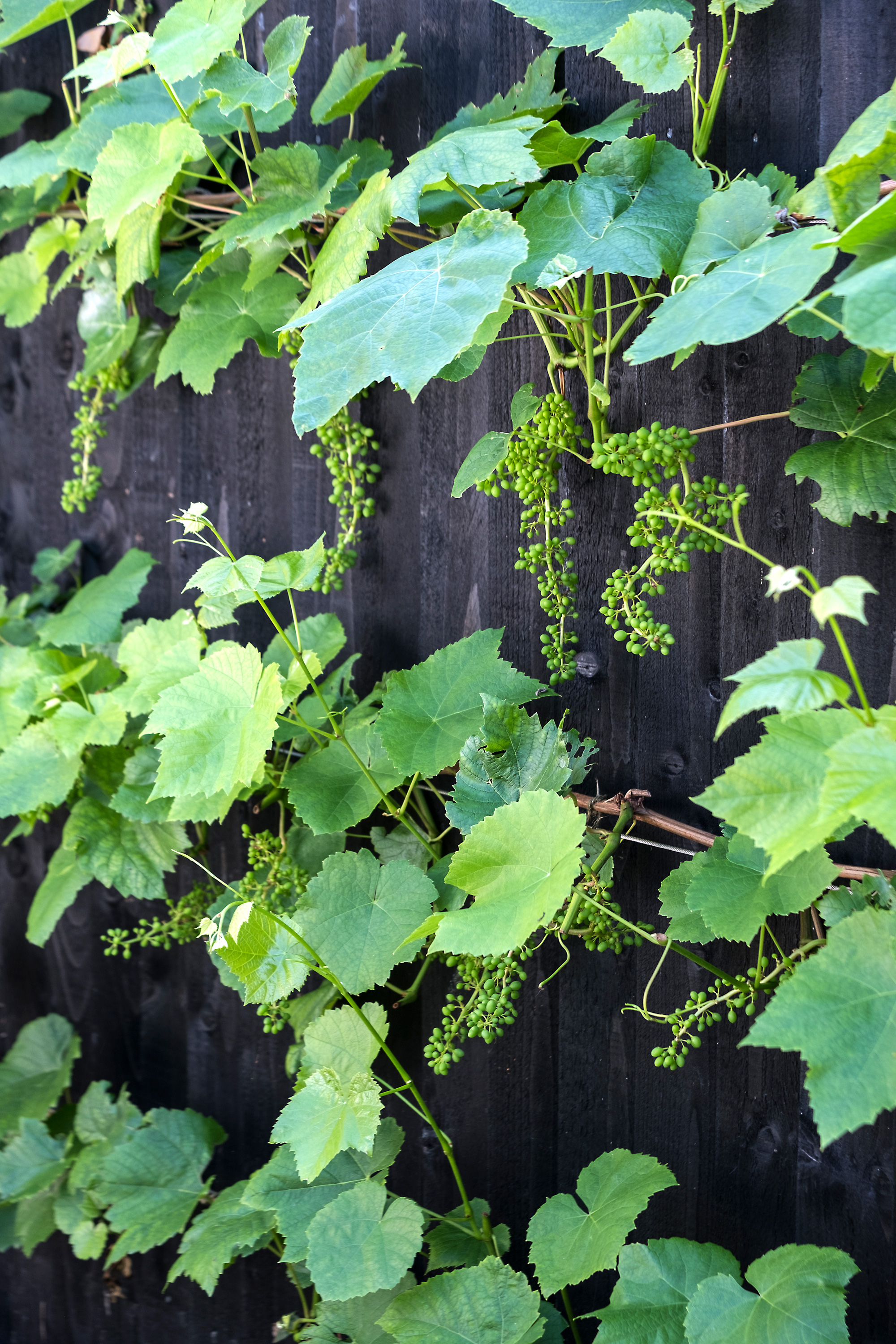
Grapevine Vitis vinifera makes an attractive ‘edimental’ (edible-ornamental plant) for the garden, with the black-painted fence acting as a foil for its handsome foliage, tendrils, and spurs of golden-green seedless fruit in September.
The plant reaches a height of about 6m, so it’s important to support the vines on wires, securely attached to the fence posts with vine eyes.
Get the look
Additional words by Liz Potter.
This article first appeared in Ideal Home, May 2025 issue.
Subscribe and save here.

Ginevra Benedetti has been the Deputy Editor of Ideal Home magazine since 2021. With a career in magazines spanning nearly twenty years, she has worked for the majority of the UK’s interiors magazines, both as staff and as a freelancer. She first joined the Ideal Home team in 2011, initially as the Deputy Decorating Editor and has never left! She currently oversees the publication of the brand’s magazine each month, from planning through to publication, editing, writing or commissioning the majority of the content.
You must confirm your public display name before commenting
Please logout and then login again, you will then be prompted to enter your display name.
